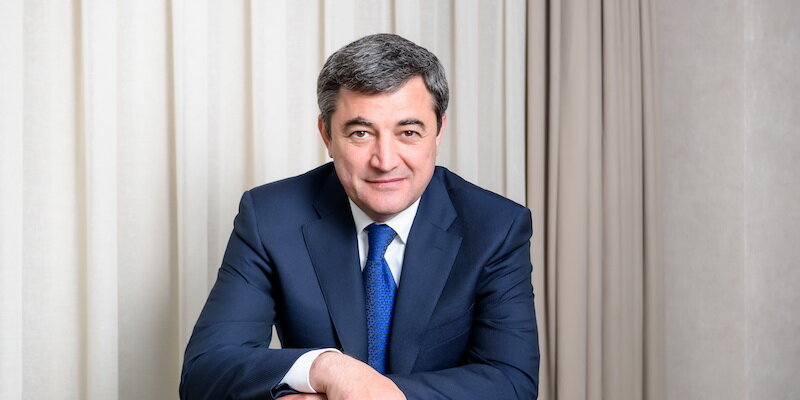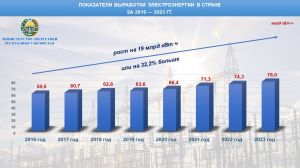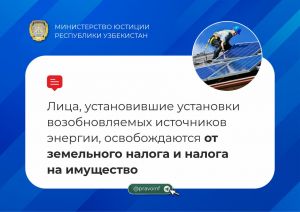
Mr. Sultanov, how has Uzbekistan’s energy sector been impacted by the pandemic? What responses are being implemented in this regard?
Of course, the operation of a complex energy system during the quarantine required the introduction of new rules. It is primarily related to compliance with the sanitary regime in all of our plants and offices. Only a small part of the fuel and energy sector employees could be transferred to remote work. We also introduced a direct medical monitoring of the situation at new facilities that continue to be built in accordance with the planned schedules.
The previously reached export-import agreements were also adjusted. An example could be the decline in gas exports to China. The implementation of some projects involving foreign labor and supplies from abroad has slowed down, but not stopped.
All in all, the fuel and energy sector of Uzbekistan continues to operate in a mode that guarantees the national energy security and fulfillment of obligations to partners. At the same time, we must comply with the previously accepted schedules for the opening of new facilities, including those with increased complexity.
For example, despite the lockdown conditions, we continued the tender stages on construction of a 100 MW wind farm. By May 2020, 70 companies and consortia from 30 countries had submitted applications for this project.
On June 8, the Ministry of Energy signed the agreement with Masdar Energy (UAE) to build a 500 MW wind farm in Zarafshan, Navoi province.
Planned work on other important projects never paused. In particular, Uzbekistan GTL (a joint project with Hyundai Engineering Co. Ltd and Enter Engineering Pte. Ltd) has taken measures to strengthen control and prevention of COVID-19 in the project area, but work continues. This is one of the most significant projects, which is expected to be completed by December 2020.
And in parallel, some important new regulations for the national energy sector were also adopted?
Yes, in May 2020, the "Concept of Providing the Republic of Uzbekistan with Electric Energy for 2020-2030" was approved. This means that we are not only thinking about what is urgent, but also have clear calculations on how to ensure the national energy security in future.
The Concept sets ambitious goals. By 2030, we intend to increase the total capacity from 12.9 GW to 29.3 GW, and power generation from 63.6 billion KWh to 120.8 KWh, reduce the natural gas consumption from 16.5 billion cubic meters to 12.1 billion cubic meters, and reduce transmission losses to 2.35 percent and distribution losses to 6.5 percent—meaning we will reduce losses by half when compared to 2019.
The Concept plan stipulates number of priority measures aimed at the modernization and reconstruction of existing power plants, as well as construction of new ones using energy-efficient technologies. It also calls for the improvement of electricity metering systems and the development of renewable energy sources, as well as legal reforms to improve tariff policy and ensure the transition to the wholesale market.
The Concept includes the development of renewable energy. How would you assess the prospects for this area in Uzbekistan?
Indeed, projects with renewable energy sources (RES) occupy an important place in the Concept and already attract substantial interest from potential investors. The move was also supported the in a new law on the use of renewable energy sources, which was adopted in May 2019. Uzbekistan aims to increase the share of renewables in electricity generation to at least 20 percent by 2025 and minimum 25 percent by 2030. Today, this figure is around 10 percent.
For this purpose, it is envisaged to build new facilities with a total capacity of almost 10 GW. Of these, 5 GW to be generated by solar stations, 3 GW by wind farms and 2 GW by hydroelectric power stations (HPPs). One should note that the development of wind energy is a novelty for Uzbekistan.
The new facilities and modernization of existing HPPs will ensure the production of more than 37 billion kWh of electricity, as well as conditional annual savings of more than 8.1 billion cubic meters of natural gas.
What makes foreign companies interested in renewable energy projects in Uzbekistan?
The interest of foreign companies is based on the established legal framework and, of course, the impressive RES potential in Uzbekistan. Plus, the reputable international institutions are actively involved in the implementation of such projects. For example, many solar power projects are carried out with the assistance of the World Bank, ADB and the EBRD. IFC is also engaged as a lead consultant to assist in structuring and conducting tenders.
Uzbekistan has the Solar Energy Institute and adopted the Roadmap for the Development of Solar Energy. By the end of 2021, we plan to put into operation two photovoltaic power plants of 100 MW each.
Earlier this year, a tender was announced for the construction of two photovoltaic plants with a capacity of 200 MW each in the Samarkand and Jizzakh regions of Uzbekistan as part of the Scaling Solar II program. Dozens of companies responded to the tender.
During the recent visit by officials of the U.S. International Development Finance Corporation (DFC) to Tashkent, the possibility of creating a joint investment fund was also discussed. In particular, DFC expressed interest in investing in Uzbekistan’s energy sector. What can you say about the interest from American investors?
Uzbekistan and the United States have significant experience in joint activities in the energy sector, mainly based on partnership with General Electric. Among the implemented joint projects, one can note the construction of a combined-cycle gas plant with 370 MW capacity at the Tashkent TPP (the project cost is 410 million USD). Construction was completed in 2018, General Electric equipment was used and the plant is successfully operating.
Construction of two combined-cycle gas plants with a total capacity of 560 MW at the Takhiatash TPP (678 million USD) is being completed. A consortium of Hyundai Engineering group of companies is implementing this project, while General Electric supplies the main equipment.
There are also plans to build in 2022-2023 a new TPP based on combined-cycle gas plants with a total capacity of 1300 MW, on the terms of public-private partnership in the Syrdarya province (USD 1 billion). The project will be implemented jointly with the IFC, with selection of the investor according to the World Bank rules. General Electric can participate in this project as an equipment supplier.
In 2019, General Electric participated in a Roadshow organized jointly with the ADB to modernize the gas transportation system of Uzbekistan in two phases for a total of USD 1.5 billion. The company is expected to participate in the tender for this project.
The government of Uzbekistan has recently been betting on PPP projects. How successful have public-private partnerships proven so far?
Projects based on public-private partnership in the energy system are very promising and timely. When it comes to the electric power industry, they can have a positive impact on pricing. International companies that want to build and operate private power plants in Uzbekistan prioritize lower tariffs in their project proposals, compared to those that currently operate at state-owned power plants.
Recent proposals include those by ACWA Power (Saudi Arabia) for two power plants with over 2 GW capacity; the launch of the first pilot project with the support of the ADB for construction of a solar station in Surkhandarya province; the project of a 240 MW thermal power plant in Tashkent province is being implemented by the Turkish company AKSA Energy.
What are the prospects for the implementation of the Uzbek-Russian agreements on the country’s first nuclear power plant?
The implementation of the first Uzbek nuclear power plant project is envisaged by a number of bilateral intergovernmental agreements signed in 2017-2018. The project will be financed from Uzbekistan's own funds and a state loan from Russia. The official launch of the NPP project took place on October 19, 2018 during the state visit of President of the Russian Federation Vladimir Putin to Uzbekistan. Uzatom Agency and Rosatom State Corporation conduct systematic negotiations to agree on the terms of contracts.
The nuclear power plant is part of the system to ensure a stable energy future for Uzbekistan, as the country will be provided with additional generation of almost 2.5 GW in compliance with the requirements of the Paris Climate Agreement. The nuclear power plant will enable Uzbekistan to reduce carbon dioxide emissions by up to 14 million tons and nitrogen oxides by 36 thousand tons.
The choice was made in favor of Russian technologies based on Rosatom's extensive experience. The NPP will be equipped with two power units with a 1200 MW capacity each, which meet all the safety requirements of the International Atomic Energy Agency.
After the operational launch of the NNP, Uzbekistan will save 3.7 billion cubic meters of natural gas annually. Even if you just export this saved gas without processing it, the country coffers will receive up to 600 million USD a year. However, Uzbekistan is following the path of producing high-value-added products, processing gas into polymers, which is much more profitable for exports. These plans will be implemented, in particular, at the Oltin Yo'l GTL enterprise, which is scheduled to be launched this year.
Prime Minister Abdulla Aripov said that Uzbekistan plans to stop exporting gas by 2025. Can we say that the country will no longer seek to restore export volumes that preceded the pandemic?
As I already noted, it is much more profitable for Uzbekistan to export not the natural gas itself, but products with value-added products based on it. This is the reason for the decision to gradually reduce the gas exports from Uzbekistan. A target program has been developed, which includes more than 40 projects that to be implemented at the enterprises of Uzbekneftegaz, and the state chemical company, Uzkimyosanoat, and other related industries together with leading foreign companies and other private business.
According to the trading analysis for 2018-2019, a significant share of imports is made up of products from the processing of oil and gas chemistry, as well as the chemical industry. In 2018, the share of these products amounted to USD 1.6 billion out of 7.1 billion USD of total imports and, by the end of 2019, USD 2.2 billion out of USD 8.1 billion. At the same time, polymer imports increased 1.4 times from USD 532.5 million to USD 758.7 million.
Therefore, the projects included in the program are divided into such areas, as polymers and plastics, mineral fertilizers, organic compounds, other types of chemical products, paints and varnishes, etc. Some of the major projects of the program include the expansion of the Shurtan Gas Processing Plant, which produces polyethylene and polypropylene and the construction of a gas chemical complex using methanol to olefins technology.
A market analysis of Uzbekistan and its neighbors was carried out to identify the main types of raw materials and products in demand. So, we are expanding the list of projects for further processing of hydrocarbons, which are to be implemented mainly by public-private partnerships. Several projects have been launched for the production of hydrogen peroxide, composite polymer materials, and other products.
As for the volume of gas exports after the end of the lockdown restrictions imposed in most countries of the world due to the pandemic, this issue will be resolved in accordance with each specific situation and conditions by partner companies.
Russian companies remain the largest investors in the energy sector of Uzbekistan. What projects are on the agenda today, and what examples of partnership can be identified?
That’s a good question, but could take a long time to answer! Investment cooperation in the oil and gas sector has been a traditional focus of Uzbek-Russia relations. In particular, LUKOIL is actively working on the implementation of PSAs in the Kandym group of fields and the Hissar investment block. With Gazprom we continue developing the Shakhpakhty and Djel fields. Work is underway at the Mustakillikning 25 Yilligi field, where 12 exploration and evaluation wells are being drilled and tested. Zarubezhneft is working on the possibility of projects to increase oil recovery in the Khartoum, Eastern Khartoum, and Southern Alamyshik fields.
New avenues for cooperation are also being discussed, including issues related to the supply of oil and petroleum products to Uzbekistan. A draft of the intergovernmental agreement on these issues has been agreed. Duty-free delivery of oil and oil products from Russia will help reduce their prices in our market. According to current market conditions, with the abolition of export duties the total savings from Russian supplies will be about 30-35 percent.
Another promising development is cooperation with Tatneft, which opened its first gas stations in Tashkent and the Tashkent province last year.
What are the current trends in the energy market of Central Asia?
Further development of regional economic cooperation remains the main trend. This affects the energy sector, as well as related areas such as transportation, logistics, trade, and others. The CAREC program, which has been in place for more than 20 years, plays an important role here. One of the goals of this organization is to ensure reliable, uninterrupted, cleaner and more affordable energy supply in the region. Uzbekistan is an important link in the implementation of this task, as a country with concentration of significant energy resources.
In 2019, the Central Asian countries signed a Joint Declaration on regional cooperation in the field of energy reforms and the creation of a unified electricity market. The operation on the so-called "unified energy ring in Central Asia" was resumed in 2017. Uzbekistan plans to connect Afghanistan to its operation via the new Surkhan – Puli Khumri power transmission line. Currently, the Uzbek section of this power line is being built, which will connect Kabul to the unified energy system of Central Asia. Moreover, it can become an integral part of the CASA-1000 project and contribute to the supply of electricity to Pakistan and further to the South Asian countries.
The trend towards strengthening regional partnerships is also confirmed by joint projects in the field of hydropower. Uzbekistan and Tajikistan are discussing joint construction and operation of hydroelectric power stations in the Zarafshan river basin.
Regional transit of energy resources, their purchase and sale, and other areas are expanding. And regional capitals are discussing the idea of establishing a Regional Energy Center that would create conditions for international investors to consider Central Asia as a single promising market for the benefit of all partners.
Photo: Ministry of Energy










